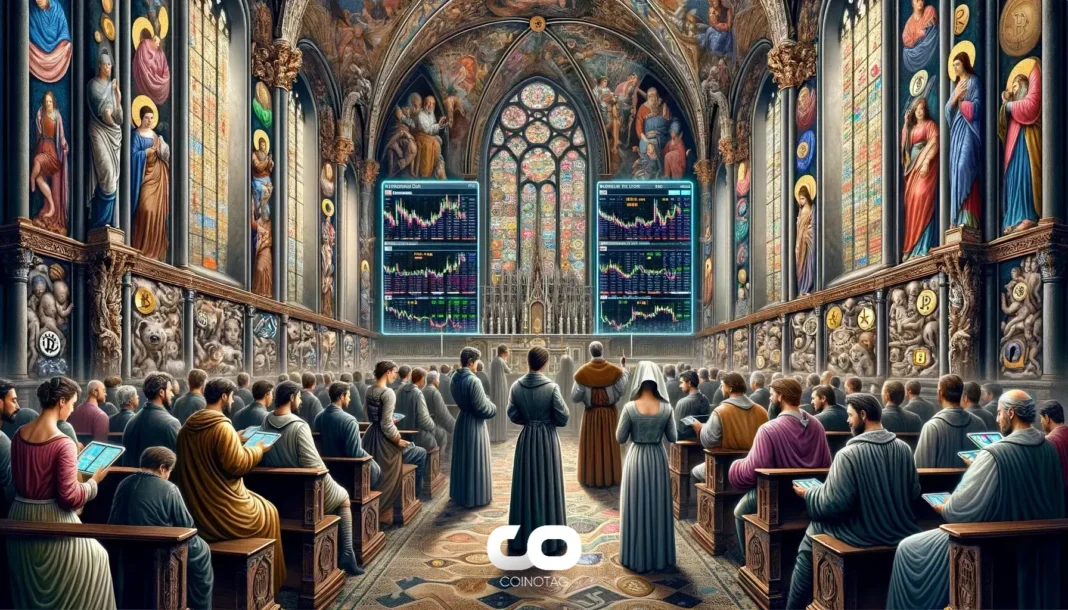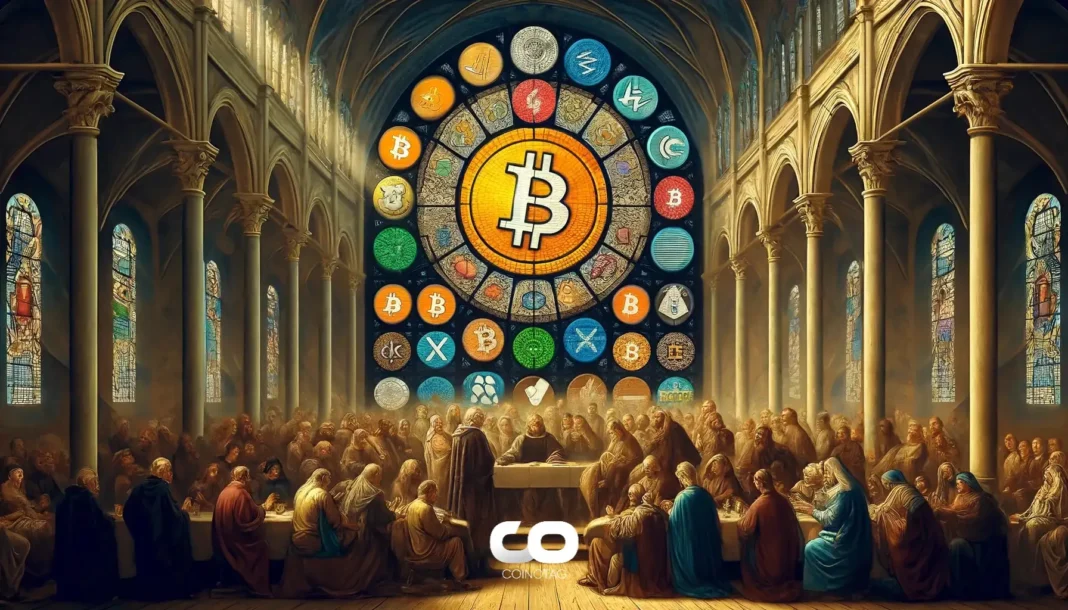| COINOTAG recommends • Exchange signup |
| 💹 Trade with pro tools |
| Fast execution, robust charts, clean risk controls. |
| 👉 Open account → |
| COINOTAG recommends • Exchange signup |
| 🚀 Smooth orders, clear control |
| Advanced order types and market depth in one view. |
| 👉 Create account → |
| COINOTAG recommends • Exchange signup |
| 📈 Clarity in volatile markets |
| Plan entries & exits, manage positions with discipline. |
| 👉 Sign up → |
| COINOTAG recommends • Exchange signup |
| ⚡ Speed, depth, reliability |
| Execute confidently when timing matters. |
| 👉 Open account → |
| COINOTAG recommends • Exchange signup |
| 🧭 A focused workflow for traders |
| Alerts, watchlists, and a repeatable process. |
| 👉 Get started → |
| COINOTAG recommends • Exchange signup |
| ✅ Data‑driven decisions |
| Focus on process—not noise. |
| 👉 Sign up → |
-
The Shiba Inu community is making headlines with an unprecedented surge in SHIB burn rates, signaling a growing commitment to reducing supply.
-
Despite this remarkable burn activity, the SHIB price has seen a paradoxical decline, raising questions about market dynamics and investor sentiment.
-
“The total amount of SHIB destroyed over the past week constitutes 63,327,612 SHIB,” notes a report from Shibburn, emphasizing the community’s ongoing efforts.
Shiba Inu community achieves a 5,785% burn surge, yet SHIB price declines. Explore the market trends and community reactions in this detailed analysis.
SHIB burns surge 5,785%
The Shiba Inu community has recently demonstrated a remarkable commitment to reducing the circulating supply of SHIB, with reported burn rates soaring by an astonishing 5,785%. This uptick can be attributed to recent community efforts aimed at enhancing the coin’s scarcity and overall value.
As tracked by Shibburn, a total of 3,244,007 SHIB tokens were burned in a 24-hour period, significantly impacting the coin’s market dynamics. The two most substantial burns—1,263,583 SHIB and 1,000,000 SHIB—were funneled into dead-end wallets, permanently removing these tokens from circulation.
Over the past week, the total SHIB destruction reached approximately 63,327,612 SHIB. However, it’s important to note that the burn rate has declined by 6.81% compared to the previous week, indicating fluctuating community engagement levels.
| COINOTAG recommends • Professional traders group |
| 💎 Join a professional trading community |
| Work with senior traders, research‑backed setups, and risk‑first frameworks. |
| 👉 Join the group → |
| COINOTAG recommends • Professional traders group |
| 📊 Transparent performance, real process |
| Spot strategies with documented months of triple‑digit runs during strong trends; futures plans use defined R:R and sizing. |
| 👉 Get access → |
| COINOTAG recommends • Professional traders group |
| 🧭 Research → Plan → Execute |
| Daily levels, watchlists, and post‑trade reviews to build consistency. |
| 👉 Join now → |
| COINOTAG recommends • Professional traders group |
| 🛡️ Risk comes first |
| Sizing methods, invalidation rules, and R‑multiples baked into every plan. |
| 👉 Start today → |
| COINOTAG recommends • Professional traders group |
| 🧠 Learn the “why” behind each trade |
| Live breakdowns, playbooks, and framework‑first education. |
| 👉 Join the group → |
| COINOTAG recommends • Professional traders group |
| 🚀 Insider • APEX • INNER CIRCLE |
| Choose the depth you need—tools, coaching, and member rooms. |
| 👉 Explore tiers → |
SHIB price peaks and falls
Amidst the excitement of increased burn rates, the SHIB price trajectory has taken a downward turn. On January 21, the token experienced an impressive gain of 7.71%, peaking at $0.00002126. Unfortunately, this momentum was short-lived, leading to a subsequent 3.85% decline, bringing the current price to $0.00002043.
SHIB’s price movements have mirrored those of Bitcoin, which experienced fluctuations around the same time. Bitcoin reached its local high of $107,163 following a 6% increase but has since corrected, now trading at approximately $104,900.
| COINOTAG recommends • Exchange signup |
| 📈 Clear interface, precise orders |
| Sharp entries & exits with actionable alerts. |
| 👉 Create free account → |
| COINOTAG recommends • Exchange signup |
| 🧠 Smarter tools. Better decisions. |
| Depth analytics and risk features in one view. |
| 👉 Sign up → |
| COINOTAG recommends • Exchange signup |
| 🎯 Take control of entries & exits |
| Set alerts, define stops, execute consistently. |
| 👉 Open account → |
| COINOTAG recommends • Exchange signup |
| 🛠️ From idea to execution |
| Turn setups into plans with practical order types. |
| 👉 Join now → |
| COINOTAG recommends • Exchange signup |
| 📋 Trade your plan |
| Watchlists and routing that support focus. |
| 👉 Get started → |
| COINOTAG recommends • Exchange signup |
| 📊 Precision without the noise |
| Data‑first workflows for active traders. |
| 👉 Sign up → |
The broader implications of these price movements can be seen through investor sentiment, particularly as Bitcoin recently set an all-time high of $109,114. Such developments highlight the interdependencies between these cryptocurrencies, especially during periods of significant market activity.
Crypto world celebrates Ross Ulbricht’s pardon
In a notable development made public today, the cryptocurrency community is reacting to the pardon granted to Ross Ulbricht, the founder of the infamous Silk Road marketplace. This platform, established in 2012, was the first to incorporate Bitcoin as a payment method, although it was primarily used for illegal transactions.
| COINOTAG recommends • Traders club |
| ⚡ Futures with discipline |
| Defined R:R, pre‑set invalidation, execution checklists. |
| 👉 Join the club → |
| COINOTAG recommends • Traders club |
| 🎯 Spot strategies that compound |
| Momentum & accumulation frameworks managed with clear risk. |
| 👉 Get access → |
| COINOTAG recommends • Traders club |
| 🏛️ APEX tier for serious traders |
| Deep dives, analyst Q&A, and accountability sprints. |
| 👉 Explore APEX → |
| COINOTAG recommends • Traders club |
| 📈 Real‑time market structure |
| Key levels, liquidity zones, and actionable context. |
| 👉 Join now → |
| COINOTAG recommends • Traders club |
| 🔔 Smart alerts, not noise |
| Context‑rich notifications tied to plans and risk—never hype. |
| 👉 Get access → |
| COINOTAG recommends • Traders club |
| 🤝 Peer review & coaching |
| Hands‑on feedback that sharpens execution and risk control. |
| 👉 Join the club → |
Ulbricht was sentenced to two life terms in prison following the shutdown of Silk Road in 2013. The recent pardon by newly-elected President Donald Trump has reignited discussions about the implications for cryptocurrency’s future, especially concerning legal and ethical dimensions within the space.
Market Response and Community Sentiment
The response from the cryptocurrency community has been predominantly favorable, viewing Ulbricht’s pardon as a potential catalyst for broader acceptance and regulatory re-evaluation surrounding digital currencies. As the community reflects on this new chapter, discussions are emerging about the potential impact on decentralization and individual freedoms within the crypto sphere.
Looking Forward: Insights on SHIB and Broader Crypto Market Trends
As the Shiba Inu community navigates these changes, analysts are closely monitoring burn rates and price movements. The continued commitment to eliminating supply may foster a burgeoning interest in SHIB, but market fluctuations reflect underlying volatility that investors must consider.
Conclusion
In summary, while the Shiba Inu community’s burn achievements represent significant progress in efforts to increase token scarcity, the concomitant price decline signals a complex relationship between supply management and market perception. The pardon granted to Ross Ulbricht also opens up important discussions about cryptocurrency regulations moving forward. Stakeholders should remain vigilant as they engage with both the challenges and opportunities presented by these developments.
| COINOTAG recommends • Exchange signup |
| 📈 Clear control for futures |
| Sizing, stops, and scenario planning tools. |
| 👉 Open futures account → |
| COINOTAG recommends • Exchange signup |
| 🧩 Structure your futures trades |
| Define entries & exits with advanced orders. |
| 👉 Sign up → |
| COINOTAG recommends • Exchange signup |
| 🛡️ Control volatility |
| Automate alerts and manage positions with discipline. |
| 👉 Get started → |
| COINOTAG recommends • Exchange signup |
| ⚙️ Execution you can rely on |
| Fast routing and meaningful depth insights. |
| 👉 Create account → |
| COINOTAG recommends • Exchange signup |
| 📒 Plan. Execute. Review. |
| Frameworks for consistent decision‑making. |
| 👉 Join now → |
| COINOTAG recommends • Exchange signup |
| 🧩 Choose clarity over complexity |
| Actionable, pro‑grade tools—no fluff. |
| 👉 Open account → |
| COINOTAG recommends • Members‑only research |
| 📌 Curated setups, clearly explained |
| Entry, invalidation, targets, and R:R defined before execution. |
| 👉 Get access → |
| COINOTAG recommends • Members‑only research |
| 🧠 Data‑led decision making |
| Technical + flow + context synthesized into actionable plans. |
| 👉 Join now → |
| COINOTAG recommends • Members‑only research |
| 🧱 Consistency over hype |
| Repeatable rules, realistic expectations, and a calmer mindset. |
| 👉 Get access → |
| COINOTAG recommends • Members‑only research |
| 🕒 Patience is an edge |
| Wait for confirmation and manage risk with checklists. |
| 👉 Join now → |
| COINOTAG recommends • Members‑only research |
| 💼 Professional mentorship |
| Guidance from seasoned traders and structured feedback loops. |
| 👉 Get access → |
| COINOTAG recommends • Members‑only research |
| 🧮 Track • Review • Improve |
| Documented PnL tracking and post‑mortems to accelerate learning. |
| 👉 Join now → |







